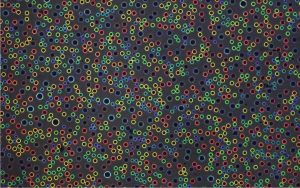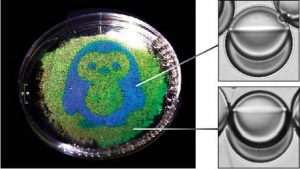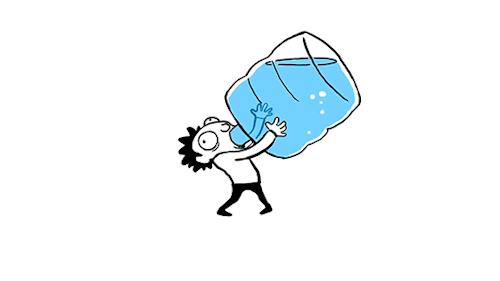Add Users
If you want to add yourself to this blog, please log in.
-
Recent Posts
Categories
Authors
Category Archives: Uncategorized
We’re not having such a whale of a time in southern BC

Photo by Elaine Thompson of The Associated Press
The main problem
It had been in the news for quite some time now that the southern resident killer whale population (SKP) has been in danger of extinction. News articles cite various reasons for the possible downfall of this community. NOAA fisheries, a conservation association based in Maryland, has stated that there are three main risk factors contributing to the dwindling community of the SKP. These include a lack of prey availability, contaminant accumulation built up in the fat tissue of the whales, and excess noise generated from boat activity.
Importance of this population
The impact of this endangered species extends beyond the scope of ecology. the symbolism of the SKP has a significant place in the first nations community living in western Canada. It is said according to Orca Spirit Adventures that the killer whale represents the soul of people who have died at sea. The Orca whale stands for defying challenges and overcoming obstacles. The meaning of the orca is highly reflected in first nations artwork and stories. The fact that the SKP is so important to this native culture makes their status as an endangered species all the more concerning. The loss of this species would not just be a loss to the marine environment, it would detrimental to the first nations people of BC who have incorporated the SRP into their traditional practices for countless generations.

Photo of first nations Killer Whale art from: https://shop.slcc.ca/learn/the-whale/
How bad is this situation?
While certain media outlet have described what’s happened to our SKP as a catastrophe, the situation may not be as bad as it seems. In his keynote speech to the B.C. Marine Mammal Symposium, biologist and member of the SCIE 300 teaching team Dr. Andrew Trites evaluates the arguments various arguments used discuss the declining Killer Whale population. For example, Dr. Trites addresses the goal of having a SRP rise from 76 to over 200 by explaining that the carrying capacity of the southern coast may not be able to support this growth. Dr. Trites goes further to explain that the true issue may be the lack of fertile female Killer Whales.
While this presentation is from 2017, estimates from January of this year by Orca Network suggest the population may currently be 74 which is still within the normal range presented in Dr. Trites’ talk.
What can you take away from all of this?
Like anything, there seems to be mixed opinions on how to handle the declining population of the Southern Resident Killer Whales. It is important to know what we as members of the community are able to do to help keep this community live. For starters, it is imperative that people follow BC government fishing guidelines for Chinook Salmon. The whales are extremely particular eaters and mainly consume Chinook Salmon. Secondly, support local tourism industry that promotes sustainable whale watching to prevent excess boat traffic in close proximity to these whales which has been shown to stress the population.
Colorful Droplets

Water droplets of varying sizes reflect different colours Credit: Zarzar Laboratory, Penn State Source: https://www.eurekalert.org/multimedia/pub/194181.php
Pigments, dyes, and the rainbow are one of the many examples of the physical phenomena that create colour. A purple coloured t-shirt appears purple due to scattering and absorption of a certain wavelength of light more than others. The scattering and diffraction of light in a circular droplet forms a spectrum of colours in the atmosphere, which is known as a rainbow. However, an unrecognized mechanism of changing the structural shape of a droplet can also generate hues of colour.
In most cases, oil and water do not go so well together. However, transparent oil droplets have shown that a change in the structural shape of these concave droplets can appear as different colours depending on the viewer’s perspective. Below is a video demonstrating the many hues of colour that appear at different viewing directions.
A group of researchers at Penn State published a paper which explored the origin of these colours by projecting white light into a biphasic (have two phases, water and oil) concave droplet in a petri dish. The light enters the droplet which bounces on the oil-oil interface, and the reflected colours are projected in the shape of a translucent dome, which are the colours you see. They discovered that the curvature of the oil-oil interface in the droplet corresponds to the change in the iridescence. With correct techniques, they were able to manipulate the droplet shape, size, and curvature to produce an image of a blue and green penguin. This research can be of use to a variety of fields from sensors, displays, cosmetics and any colour-changing materials.

A penguin image produced by the reflection of oil in water droplets Credit: Zarzar laboratory, Penn State Source: https://www.eurekalert.org/multimedia/pub/194182.php?from=422099
Observation of this phenomenon applies to droplets on transparent surfaces, and you can easily replicate this at home. A container with hot food and a sealed transparent lid will lock the steam forming droplets which will produce hues of colour.
Stacy Wu
Posted in Science Communication, Science in the News, Uncategorized
Tagged Colour, Diffraction, Oil droplets
Eating Too Much Sugar Leads To Heart Disease
Growing up, we were told that candies and sweets will give us cavities and that sugar will decay our teeth. Sugar, sweets and chocolates may be our guilty pleasure, but what if I told you that eating too much sugar can lead to heart disease? There are many studies that explain how sugar causes tooth decay, however consumption of sugar in large quantities may increase the risk of having heart disease, diabetes, and more. Heart disease, also known as cardiovascular disease may lead to heart attacks, chest pain or even a stroke. Therefore, having a high-sugar diet can increase the risk of dying from heart disease.

How much sugar is too much sugar? Credit: https://media.giphy.com/media/sN6rHuJQ9p61y/giphy.gif
How Can Eating Too Much Sugar Kill You?
In this video, Science Insider a YouTube channel that primarily creates educational videos, explains how over-consuming sugar can lead to heart disease and other health problems.
Once sugar is consumed, the sugar molecule known as fructose is metabolized by the liver. However, when the liver cannot process and metabolize fructose as it reaches its’ max capacity, the excess sugar turns into liver fat. The video further explains that high-sugar diets drive metabolic syndrome such as heart disease, diabetes, cancer or dementia.
Research Study on Heart Disease
A study from Harvard University, explained that sugar consumption is essential for energy and regular in human diets . However, consuming too much added sugar raises the risk of having health-related implications and in many cases lead to heart disease. The study was performed over the course of 15 years which involved the amount of sugar content in each participants’ diet. The results from the research study shows that participants who had an extra 25% added sugar into their daily diets had a higher chance of dying from heart disease implications. However, participants who consumed sugar with less than 10% added into their daily diets did not. The results were staggering as consumers that ingest 25% more sugar in their daily diet increase their chances of dying from heart disease twice as much.

Heart disease affects the function of the heart. Credit: https://media.giphy.com/media/yeUxljCJjH1rW/giphy.gif
The risk of metabolic syndrome such as heart disease is life threatening is very serious. We’re all guilty of having a sweet tooth, and chocolate and lollipops may be irresistible. However, we should educate our family, friends, and children to reduce sugar intake to reduce future health risks
Cindy San
Blog Post #2
Posted in Uncategorized
Drinking too Much Water Can Kill You
Growing up, we have been told numerous times to drink at least four-to-six cups of water a day to stay hydrated. Water is an essential part of life, but what if I told you that drinking too much water can kill you? There are many studies that explain how over-hydration, especially when you are finishing a workout or have kidney issues may increase the risk of water intoxication. Water intoxication, also known as hyponatremia can be hazardous to your health and in a few cases lethal.

Drinking 3 Litres of water a day keeps you well hydrated. Credit: Chris Bishop http://teded.tumblr.com/post/142459697422/10-facts-about-water-your-body
How Can Over-hydration Kill You?
In this video, Science Insider a YouTube channel that primarily creates educational videos, explains how dangerous and harmful over-hydration can be.
Drinking faster than your kidney can process disrupts the balance of Sodium and water in the cells resulting in the cell swelling up and expanding. The video continues explaining how the continuous swelling of cells, especially brain cells leads to dizziness and brain damage.
Research Study on Water Intoxication
A study from Queen Mary University of London, explained that water consumption is indeed beneficial to the human body in healthy amounts. However, Exercise-associated hyponatremia (EAH) also known as water intoxication in marathon runners are more prevalent.
The study collected surveys on 298 participants who were all runners in the 2014 London Marathon, surprisingly only 48% of participants had knowledge about the effects of water intoxication and how much water should be consumed during the run. As study shows that 13% of marathon runners show mild symptoms of water intoxication. The saying “drink to thirst,” is known to be the most effective guideline to prevent water intoxication compared to “drink to max.” There isn’t enough proof that establishes when mild symptoms of water intoxication becomes symptomatic. But what is known is that hydration strategies is vital to the safety of participants that are involved in high physical activity.

Know your limit and stay within it! Credit: Chris Bishop http://teded.tumblr.com/post/142459697422/10-facts-about-water-your-body
The effects of over-hydration is lethal and should not be taken lightly! We’re all guilty of gulping down a few drinks or even consuming excess amounts of water after a workout, however we should definitely take a few sips back and think about how much water we really need.
Cindy San
Blog Post #1
